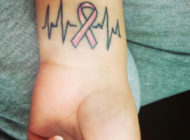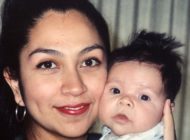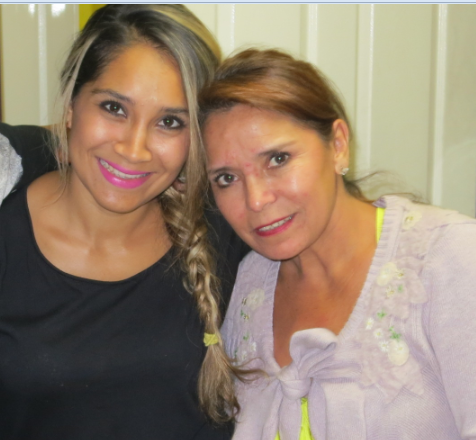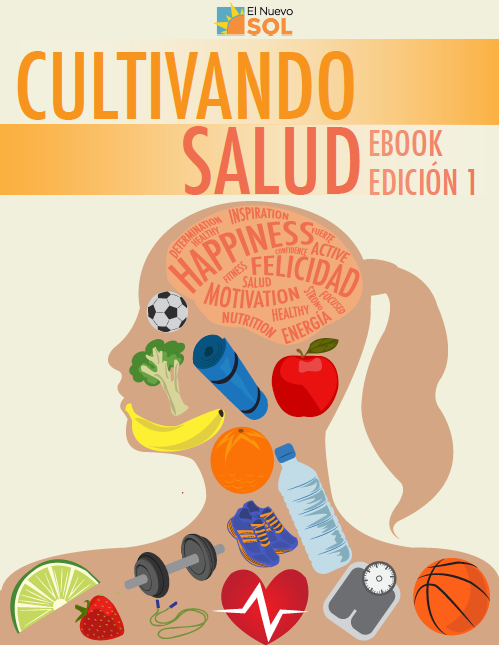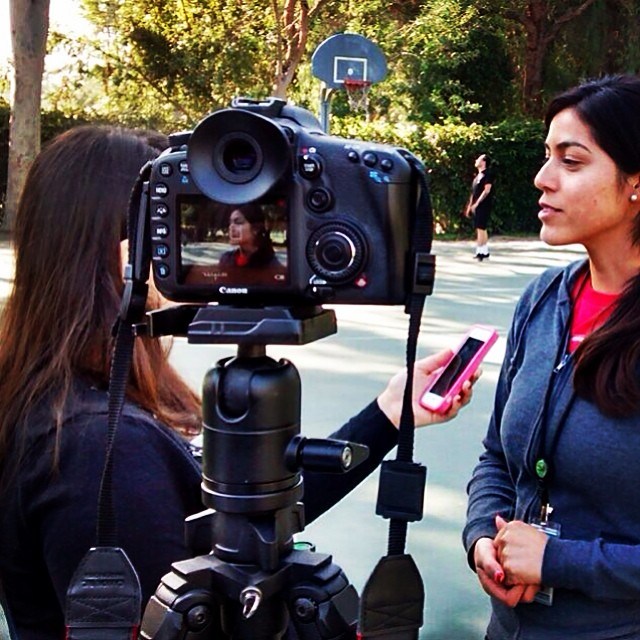When a child is diagnosed with ASD they almost always qualify for services at their community’s regional centers, but certain hang-ups can continue to occur at these centers that can frustrate families.

Erin Hughes and her sixth grade students at the Help Group in Culver City gather for a wild class photo before they finish another year of school and enjoy their summer break. The Help Group is a school that helps children with special needs. Photo courtesy of Erin Hughes.
By WILLIAM HERBE
ELNUEVOSOL
Just like any other kid on the block, Georgie Cardenas from Gardena has his phobias and fears. But it’s not the neighborhood pit bull or the fear of heights that terrifies the eight year-old. Georgie is terrified because he is about to get a haircut. Rather than taking a seat and taking a little off the top, Georgie begins a battle with his parents who move in to hold him down. Georgie is in for the fight of his life.
”He’s scared of nail cutting and getting his hair cut, but won’t be of a barking dog,” Alexandra Cardenas, George’s mother, said. “Every time, he cries for thirty minutes,” she added.
Through the eyes and mind of this eight year-old, a haircut is a terrifying experience. This is because Georgie has Autism. His disorder boggles the minds of researchers, clinicians, psychologists and teachers.
Alex and her husband, Carlos, found out their son had autism when he was two and half years-old. Georgie stopped talking and his parents became worried. They took him to the hospital for evaluation and the doctor said they didn’t know the cause of Georgie’s sudden silence.
”Georgie was talking at two years-old, he was a normal kid, walking, talking, doing everything and then one day he stopped talking and he couldn’t really cry no more so I kept on taking him back to the doctor.”
Eventually Alexandra took Georgie to a regional center, where he was diagnosed with autism.
Autism is a general term used to describe a group of complex developmental brain disorders known as Pervasive Developmental Disorders (PDD). Many parents and professionals refer to this group as Autism Spectrum Disorders (ASD).
Children with ASD can range from low to high functioning on the social and developmental level compared to those who have not been diagnosed at the same age.
According to the Center for Disease Control (CDC) 1 in 110 children are affected. Boys are diagnosed four to five times more frequently than girls, with 1 in 70 boys and 1 in 315 girls diagnosed with autism.
The excruciating part of learning that your child has ASD is the looming fear of receiving the right treatment and care and accessing the services to help. Accepting the diagnosis is only the beginning.
Phillip Haine, the Executive Director of the Los Angeles Chapter at Autism Speaks said the biggest hurdle for families is really figuring out the plan, road map, treatment program and how to access the services.
When a child is diagnosed with ASD they almost always qualify for services at their community’s regional centers, but certain hang-ups can continue to occur at these centers that can frustrate families.
Alexandra said the hardest part was sitting at the office and not knowing what it was. The Regional Center recommended her to watch the movie “Rain Man.”
“Rain Man” is an older man and we are talking about my two year-old. I didn’t know what it was, I never even heard of it before,” she said
“The regional center doesn’t provide the services; they are the broker of the services so you have to know exactly what’s available,” Haine said. “There is a lot of information at a regional center. You have to know what to ask for and what you are entitled to.”
That’s where Haine and Autism Speaks have become instrumental in the fight to fund research into the causes, prevention, treatments and a cure for autism.
Autism Speaks was founded in February 2005 by Bob and Suzanne Wright, grandparents of a child with autism. Since then, Autism Speaks has grown into the nation’s largest autism science and advocacy organization.
“One of the things we try and do is really educate, not only the general public, but pediatricians because they are not always keen on recognizing the signs, so it’s important for physicians regardless of any particular population they are serving to recognize the signs and refer families to the school district or the regional centers.” Haine said.
Autism Speaks has a hotline for families to call. Haine said they won’t always get an answer immediately but they can certainly leave messages. Even families who are not English speaking, can call to ask questions, get answers and leave messages too.
“I think the resources are out there, it’s just again the family having to figure out which ones are useful and appropriate to them.” Haine said.
Autism Speaks offers a comprehensive Web site as far as diagnosis, treatment, resources, and databases. For Spanish speakers, they offer a kit that guides them thru the first 100 days of living with autism. The first days are always the toughest for families after they learn of the diagnosis. The following kit will help guide families who have tough questions and limited access to help.
Erin Hughes is a sixth grade special education teacher at the Help Group in Culver City who specializes with children who have ASD. She has 11 students in her classroom and is determined to help the campaign to cure autism. She uses Applied Behavioral Analysis (ABA) to help stimulate progress with her students. Despite her work with children with autism, Hughes does not have the answer as to why ASD is diagnosed.
“The etiology has yet to be determined, it’s a disorder of symptoms,” Hughes, said.
Autism became what it is now in 1987 by Dr. Ivar Lovaas in a seminal study at UCLA. This study used the behavior principles, ABA, to help treat children with autism.
Results indicated that 48 percent of the cases were indistinguishable from peers after intervention.
“ABA is a form of therapy that teaches kids life skills, social skills and verbal behavior.
It emphasizes figuring out the reasons why children engage in maladaptive behaviors,” Hughes said. “Once the reasons for the behavior are established through many hours of observation specific consequences are established to target the specific behaviors.”
ABA, is the only empirically supported intervention for children with autism.
With autism, things always seem to be frustrating because of the lack of communication and poor social skills. But Georgie has made significant improvements over the last four years. He uses American Sign Language as a tool for communication. He is able to let his parents and his little brother, Charlie, know what he’s feeling and warn them of an oncoming tantrum.
Cardenas says Georgie is a mama’s boy. Her and her husband, Carlos, had to change their lives and schedules for Georgie. But she has great faith and believes he is making great strides toward independence.
“I changed my whole life for George. I want him not to be normal, but independent. Not to need me when he’s twenty-something,” she said.
In the meantime Georgie and other children with autism will have to continue to live in fear of hair cuts, getting their nails clipped and the debacle of not knowing how to deal with everyday situations.
Families have to hope for the best and pray that a cure and breakthrough is around the corner. And the teachers and therapists have to continue their analysis and practices that will help cure the more fortunate. Joining the fight to cure autism with Autism Speaks and other organizations will help educate those who continue to be frazzled by the mystery.
This elusive disorder is not out of cure’s reach, but the analogy of those diagnosed with the disorder can be understood this way:
“Imagine being told that today instead of going to work, you will be going to rural China and the people don’t speak your language, you’re on their turf and have no orientation whatsoever,” explained Hughes “This is exactly what it’s like for a child with autism if they are forced to disrupt their schedule in the slightest.
For more info:
Autism Speaks
Los Angeles
5455 Wilshire Boulevard
Suite 2250
Los Angeles, CA 90036
Phone: (323) 549-0500
Fax: (323) 549-0547
Walk Now for Autism Speaks: Los Angeles
Saturday, April 24, 2010 • The Rose Bowl, Pasadena
Registration opens at 8:00am • Walk kicks off at 10:00am
The walk has a resource fair so families will be able to find information, resources and services at the walk.
The Help Group
The Help Group’s Administrative Offices
Village Glen School
Bridgeport School
Young Learners Preschool for Autism
Sunrise School for Autism & Developmental Disabilities
13130 Burbank Blvd.
Sherman Oaks, CA 91401
Toll Free: 877-994-3588 Fax: 818-779-5295
Tags: Autism health transnational families William Herbe








